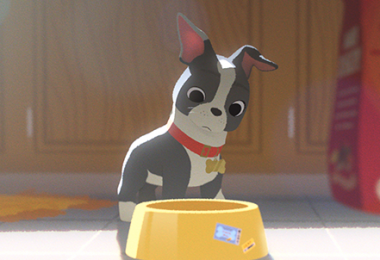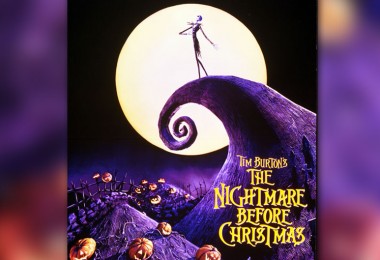Would you tell us about the story?
Tim Burton: Well… obviously it’s really about the first thing that I ever did. It was a live-action short. But, you know, I always kind of wanted to go back and try to kind of capture it in what the original drawings were, plus loving stop-motion animation. So, over the years, I’ve come up with other characters and expanded on it to kind of make it more like a house of Frankenstein. We have other monsters, other kids, and things. It was something that was personal and one of the first things I did, and all these other elements just made it feel new and kind of like a whole new project for me. But the idea of being able to do this in black-and-white stop-motion made it very special.
Did you have a dog named Sparky growing up?
TB: No, Pepe.
Can you talk about the similarities?
TB: Well, it’s just very simple. I think it’s like at that time in your life, you know, and those kinds of relationships, especially with a dog. So, it was very memorable. And I think with something like that where it’s so pure. It’s the first time you ever experience those feelings… it’s quite strong.

How long did you have Pepe?
TB: Well, that was when I was a child—so for a few years. I mean he had this disease so he wasn’t supposed to live for very long, but then he ended up living a few more years. It was like about five years.
What kind of dog was he?
TB: He’s just a mutt mongrel.
What kind?
TB: It was not one breed, just a mixture.
What kind of kid were you and what was Burbank like in the ’60s and ’70s?
TB: It’s very much very middle class. Very. It’s about as middle class as I think you could say, because it would sort of teeter on upper and lower. Burbank has stayed the same, I find. It’s still kind of rooted in that kind of mixed suburban community. I mean that’s the best way I can describe it.
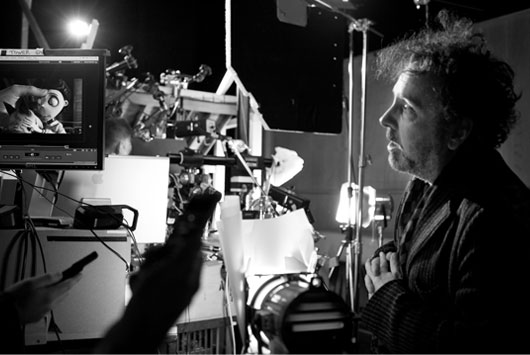
What’s the hardest thing for you about stop-motion animation?
TB: I think just the technical nature of it is hard for anyone. It’s such an unusual form of animation, you know. One frame at a time. The animators are a very special group to kind of do this type of animation. You know, you’re in a dark room for a couple years.
Do you dream in black and white or in color?
TB: Oh, I think it’s mainly in color. I’ve had a few black-and-white dreams. But they’re generally the same color mixture.
And you wanted to make it 3D?
TB: I like a lot of 3D and then some things I don’t really care for in 3D. The thing about this is 3D is about as close as you come to, like, being on it. One of joys of stop-motion is you’re on the little set. You know, you light it like a movie. So, you got light. You have interactive light. So the joy is to kind of feed, see the texture. So the thing with stop-motion and 3D, which I think is really good, is that you can almost feel like what it’s been like being on a set. Be one of the people who work on it where you can, you know, you just feel the textures. And that’s the thing that amazes me. People make all that. You know, they make these little suits. They make the full set of silverware. And that’s the joy. So, the idea of 3D just for me helps enhance the experience of seeing what’s actually there.
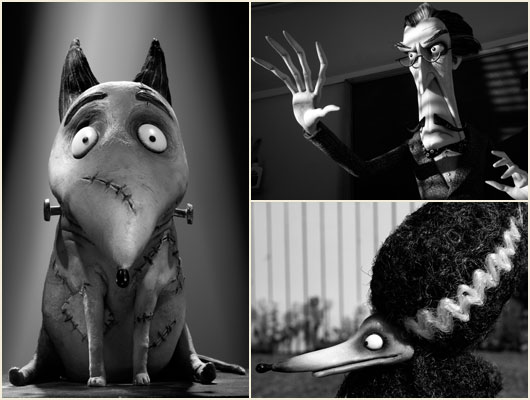
When is your most creative time?
TB: I think we all fight, especially with technologies… having a moment to just not do anything, you know? So that’s why I don’t go on the Internet or I’ve never done Facebook or Twitter or anything just because I think that the thing that you need to protect is just those moments where you’re just staring out, looking at the sea or cloud, whatever. You know, I mean for any of us, it’s like those are the times where you regenerate your soul or whatever, I think. You need time to just not have to be reacting to something, you know. And everybody, we all have to struggle with that one.
Is that away from home?
TB: Anywhere. Oh yeah, well, that of course. I mean you’re always like okay, you know, you’re working. It’s like I can’t wait to stop working and see my kids and family.
What or who scared you in real life?
TB: I had a dentist. And all I remember is his nostrils were so big. You could see every hair in his nose every single time I went to him.
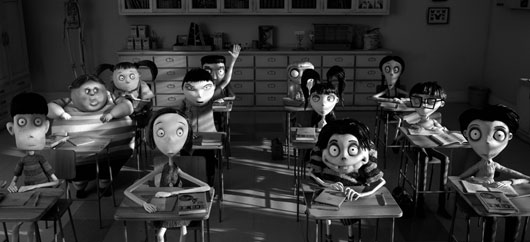
Do you think of your kids when you make these movies?
TB: It’s an interesting point. I think, yeah, you do. I think you do think about it. Yes.
Is a good director detail-oriented?
TB: Well, here everybody’s different. Some people are more attuned to a kind of environment or verbal things or sounds. For me, it’s always been a point. Those are the kind of movies I gravitated toward. But I think everybody has a different sort of way that they come at something.
Do you have any other films in development that you are passionate about?
TB: I know there are lots of things that take a while to percolate. Sometimes it’s not usually an immediate thing. You know, sometimes things take a long time to kind of gestate—kind of swirl around.




